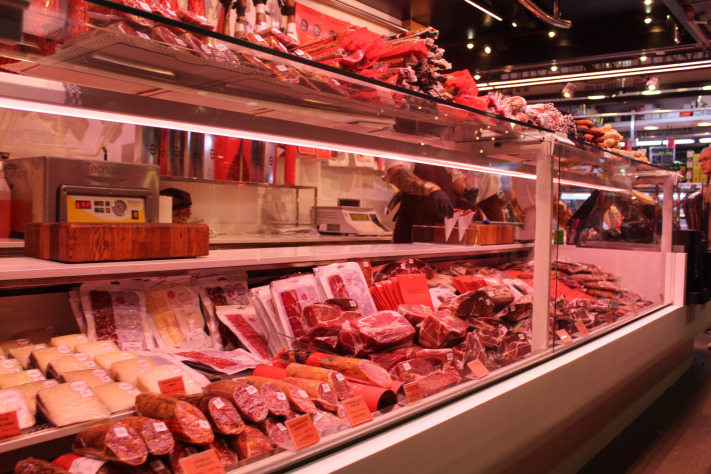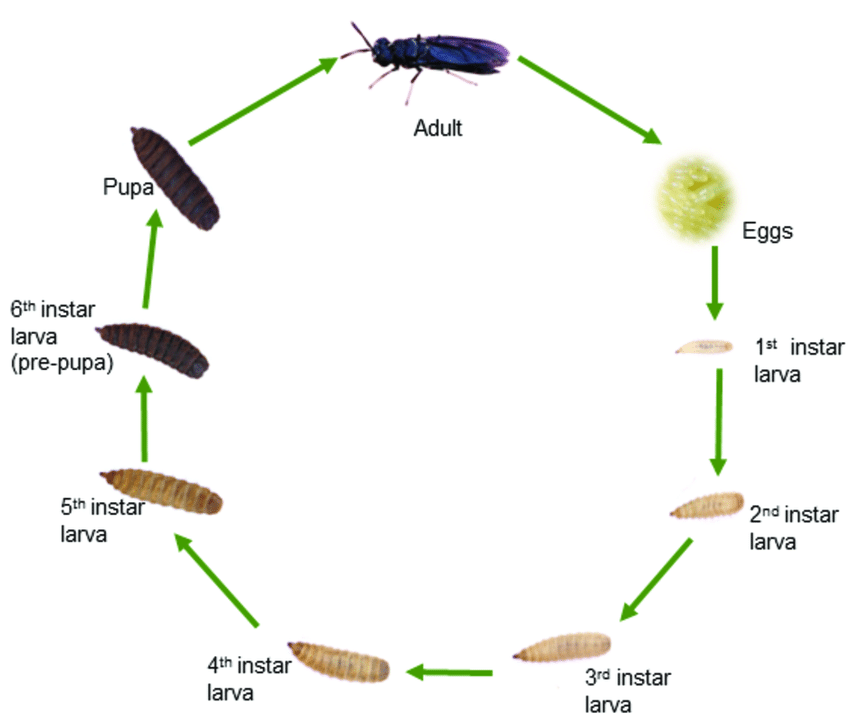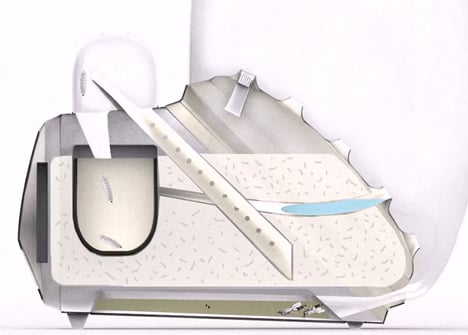Human beings need at the very least 0.8 g of protein per kg of body weight every day to function and 1.0 to 1.6 g per kg of body weight to maintain a healthy state. For many people, this protein requirement comes from eating meat.

Unfortunately the production of beef, pork, poultry and other commonly eaten meat results in a fairly large environmental impact. Globally the Green House Gas emissions contribution by the animal sector are: 9% for CO2, 35-40% for CH4, and 65% for N2O. This was calculated with the whole production process taken into account.
The introduction of mini-livestock has been proposed as one of many ways to decrease global emissions. This involves individual households rearing small animals such as ruminants, poultry, insects etc for protein. Research suggests that insects are significantly more environmentally friendly than conventional meat while being nutritionally equal. With this in mind an Austrian design company, L I V I N, has developed a miniature Black Soldier Fly farm, the Farm 432.

Black soldier flies (Hermetia illucens) are insects of the order Diptera, are medium-sized (adult 16 millimetres (5⁄8 in) long) fairly widespread flies that are completely harmless to humans. But their true value lies in their larval stage. Black soldier fly larvae are well known to be highly efficient decomposers, being able to not only turn food waste into biomass, but also reduce the microbial count of the substrate, and prevent other insects from utilizing it.


Adult BSF (Black Soldier Flies) can survive on just honey water, making their upkeep very easy in the large dome where they can fly and mate. Once the female is ready, she will lay eggs in one of the holes as it leads to the waste container. The larvae will then grow on whatever waste is provided, such as food scraps, cooking waste, and spoilt food. BSF larvae are known for a phenomenon called “self-harvesting” – as part of their natural life-cycle, the larvae will try to find an elevated position to pupate. Utilizing this behaviour, farm 432 has a ladder leading to the harvest drawer where they can later be gathered and either reintroduced to the farm to continue the cycle or be eaten.
Devices like these show a glimpse of a potential future where each household has its own miniature insect farm that’s fed exclusively on household bio-waste, leading to increased green self-sufficiency.
References:
- Beets WC (1997) The need for an increased use of small and mini -livestock in integrated smallholder farming systems. Ecology of Food and Nutrition 36: 237–245.
- Green, T.R. and Popa, R. (2012) ‘Enhanced ammonia content in compost leachate processed by black soldier fly larvae’, Applied biochemistry and biotechnology, 166(6), 1381-1387.
- Gullan PJ, Cranston PS (2005) The insects: an outline of entomology: Blackwell Publishing. pp 10–20.
- Nakagaki BJ, DeFoliart GR (1991) Comparison of diets for mass-rearing Acheta domesticus (Orthoptera: Gryllidae) as a novelty food, and comparison of food conversion efficiency with values reported for livestock. Journal of Economic Entomology 84: 891–896.
- Oonincx, D.G., Van Itterbeeck, J., Heetkamp, M.J., Van Den Brand, H., Van Loon, J.J. and Van Huis, A. (2010) ‘An exploration on greenhouse gas and ammonia production by insect species suitable for animal or human consumption’, PloS one, 5(12), e14445.
- Ramos-Elorduy J (2008) Energy supplied by edible insects from Mexico and their nutritional and ecological importance. Ecology of Food and Nutrition 47: 280–297.
- Sheppard, C. (1983) ‘House fly and lesser fly control utilizing the black soldier fly in manure management systems for caged laying hens’, Environmental entomology, 12(5), 1439-1442.
- Zheng, L., Hou, Y., Li, W., Yang, S., Li, Q. and Yu, Z. (2012) ‘Biodiesel production from rice straw and restaurant waste employing black soldier fly assisted by microbes’, Energy, 47(1), 225-229.